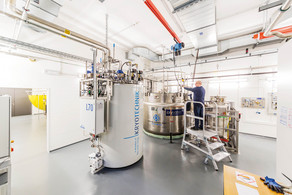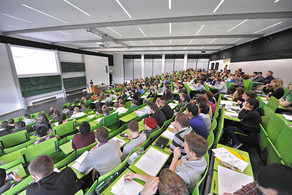Thesis defense of Simone Mender
- Defense
The precise understanding of the emission and acceleration processes of very-high-energy radiation in the Universe is still an unsolved mystery today. To study the nature of very-high-energy gamma rays, Imaging Air Cherenkov Telescopes such as the MAGIC telescopes detect Cherenkov light produced by particle showers in the atmosphere. State-of-the-art spectral and spatial analyses of gamma-ray data rely on the open-source Python package Gammapy. Due to this new approach from the gamma-ray community, the input data needs to be provided in a standardized format which requires a combination of event lists with instrument response functions. In this thesis, a spectral analysis of the two TeV radio galaxy candidates TXS 0149+710 and 4C +39.12 observed by MAGIC is conducted. For this, standardized data is produced in an automated and reproducible way using the new database-driven tool AutoMAGIC, partly developed in the course of this thesis. Li&Ma significances of 0.32 sigma and 0.98 sigma are calculated for TXS 0149+710 and 4C +39.12, respectively. Therefore, only upper limits on the differential flux are given. For spatial analyses, background models have to be included in the standardized data, which is not covered by AutoMAGIC yet. To address this challenge, 1441 observations of off data are processed with AutoMAGIC and the background shape is characterized depending on the azimuth, zenith distance, and the reconstructed energy. Also, dependencies of the background rate on the zenith distance, the transmission of the atmosphere, the NSB and the galactic latitude are investigated. A new method is developed, which creates background models according to the new-found relations with the azimuth and zenith distance. These background models are compared with background models created from non-simultaneous off data with more conventional methods. Spectral and spatial analyses of Crab Nebula data are performed to validate the background methods.








